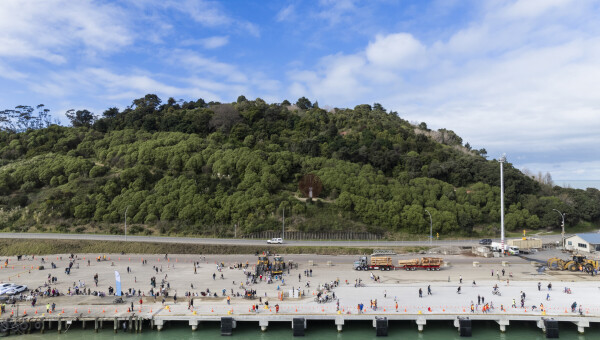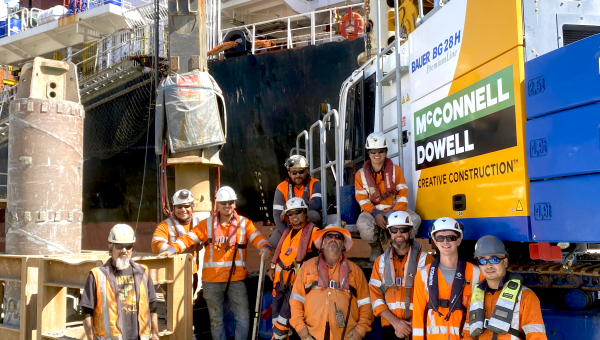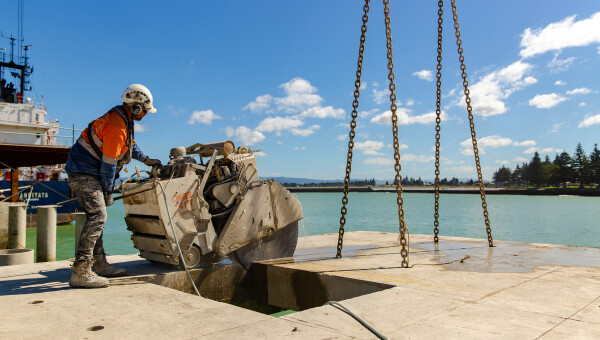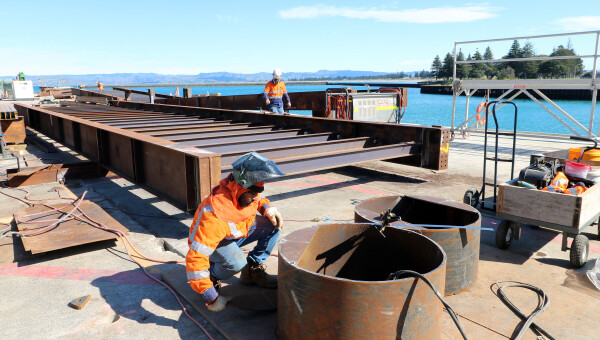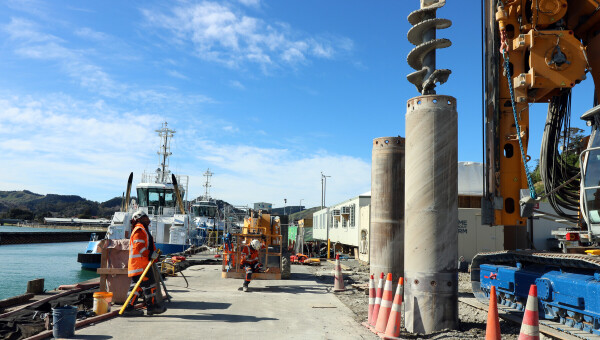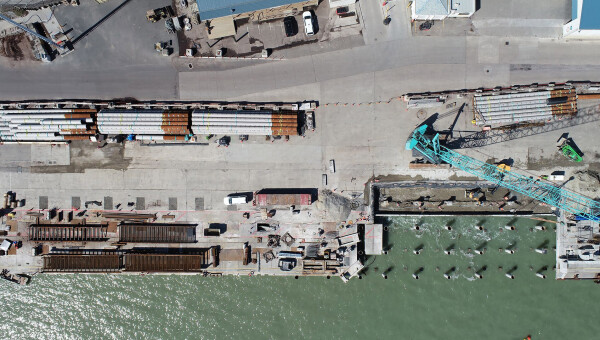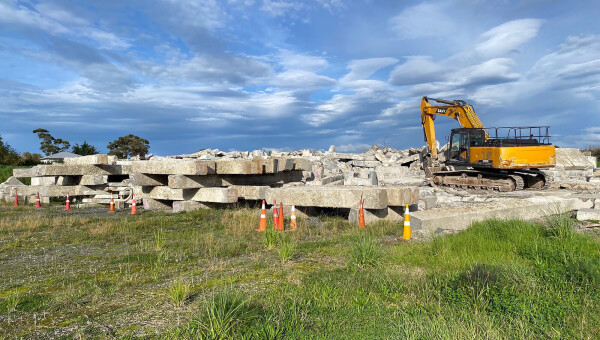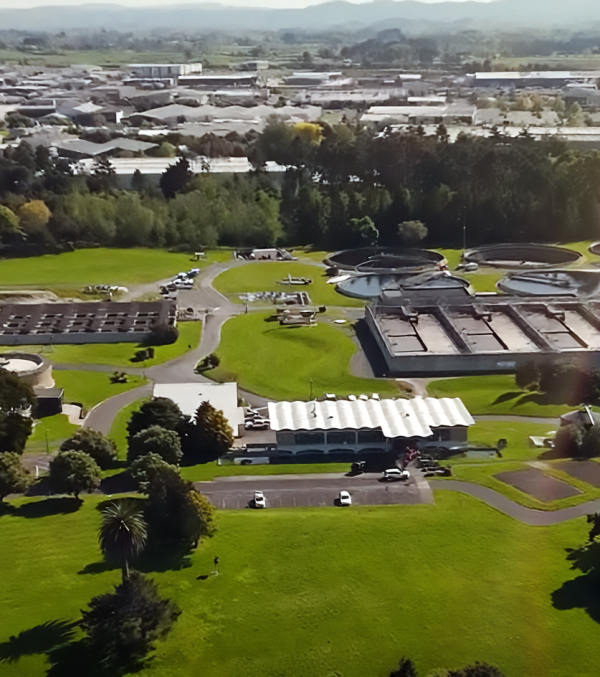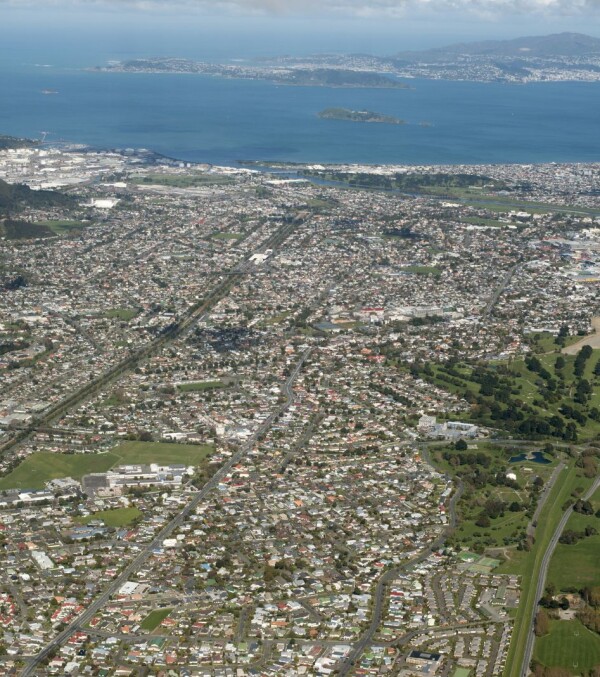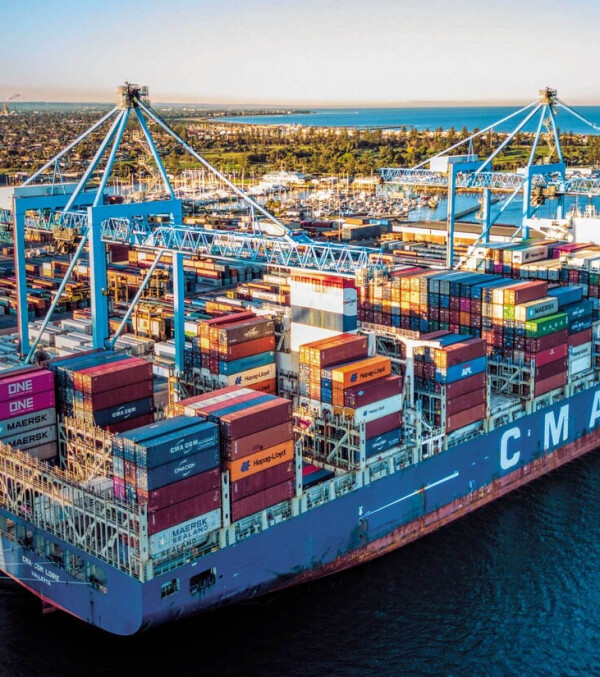|
Customer: Eastland Port Contract: Design and Construct Location: Gisborne/Tairāwhiti, New Zealand |
Fast Facts
|
Eastland Port in Gisborne, New Zealand awarded us the design and construct contract to rebuild their Wharf 7 after a very successful six-month value engineering exercise. Construction took just under 18 months to complete.
The contract was part of Stage One of the $60 million Twin Berth Project which will enable two handymax (180-200m long) ships to load and unload at the port safely, simultaneously.
The new wharf is strong enough to accommodate three new mobile harbour cranes and capable of withstanding a one-in-2500-year earthquake event providing significant regional resilience in the event of a natural disaster.
Marty Bayley, Eastland Port’s infrastructure manager, overseeing the project said the wharf design was significantly refined.
“We worked closely with McConnell Dowell to refine and modify our original concepts and come up with some innovative solutions.”
Following a six-month value engineering process collaborating with the Port, our in-house engineering team refined the design and used digital engineering and animation capabilities to refine the staging:
- To maximise value and sustainability
- Remove the need for 49,500 tonnes of hard fill
- 3,300 fewer truck movements through the city are needed
- Minimise disruption to port activities
- A drill and drive method will mitigate noise and vibration during piling
- The design and construction also minimises the impact of the project on the marine environment, (Rua Koura (crayfish Puerulus)) local ecology, and seabed.
Digital engineering played a significant role in optimising the design and construction staging for the project. Animating the BIM model into a 4D presentation of the project also enabled the team to identify conflicts and plan the work crews working onsite simultaneously.
Managing demolition and construction around the port operations was the key to successfully rebuilding the wharf. The team employed locals on the project and trained two who are now members of our piling team. The team also used local suppliers and subcontractors wherever possible. Going local and minimising materials use where possible kept the project's carbon footprint to a minimum saving 13,692 tonnes of carbon equivalent gases. Read more here.
The project won the Innovation Award at the 2023 Construction Constructor Sector Beacon Awards in Wellington on Wednesday 6 September. More information about the award and innovations are here.

